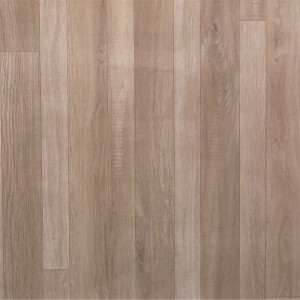Ecomomic laminate floor EIR Series
Laminate floors are sometimes called laminate wood floors, though they are wood only in two respects. First, the laminate floor base consists of pressed chipped wood particles. Second, the top has the appearance of real wood due to the accurate image layer—essentially a well-rendered photograph of wood encased in a clear, durable wear layer.
Aggregated wood particles are subjected to high pressure to form sheets. These sheets have a photorealistic image of wood or stone added to the top, and this image is covered with a wear layer. The wear layer, a durable, thin, clear plastic sheet, is the linchpin between the delicate lower layers and exterior elements such as moisture, UV rays, and scratching.


Wear Layer: Laminate flooring is a surface layer of two thin sheets of paper impregnated with melamine. This top-most surface layer is a hard transparent type of plastic sheet that is impervious to dogs, chairs, high heels, and other common damaging elements.
Image Layer: Even when viewed close-up laminate flooring can look realistic. This is due to laminate's photographic-quality image of real wood underneath the wear layer.
Base Layer (Core): Under the wood-grain photograph is about a half-inch of wood-chip composite. Any type of wood chip product is inherently susceptible to water damage. Laminate flooring's base is considered to be dimensionally stable, but only to a certain degree. It will stand up against some water, but only if this water is quickly removed.
The answer to this question depends on your definition of eco-friendly flooring, but yes—overall, yes! Laminate is one of the more environmentally-friendly floors out there.
That’s because it uses organic materials (fiberboard or plywood) in its core layer, and only a very small amount of synthetic material in its wear layer. This means it’s largely recyclable.
Compared to vinyl, this makes laminate the much more eco-friendly choice. One of the biggest disadvantages of vinyl plank flooring is that it’s made entirely of plastic. This means that, with the exception of some smaller brands like Proximity Mills, it isn’t really generally recyclable.




